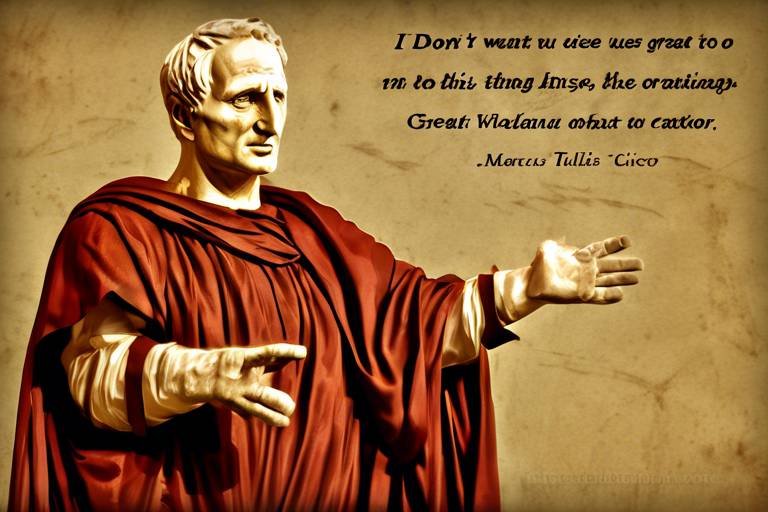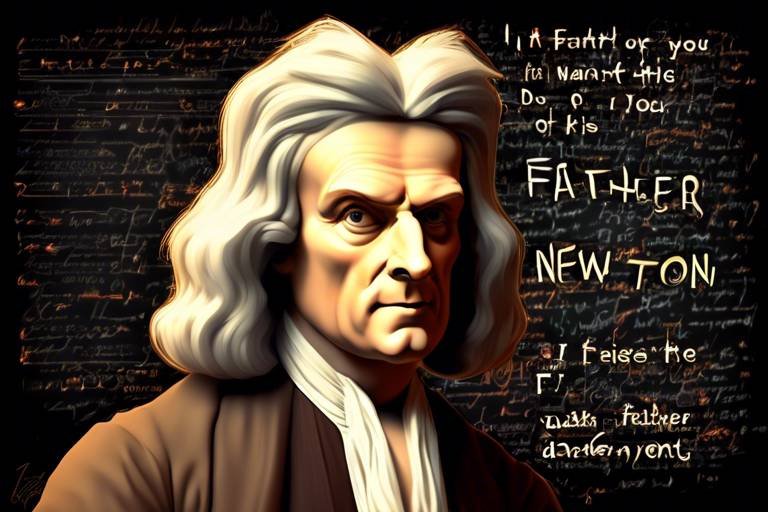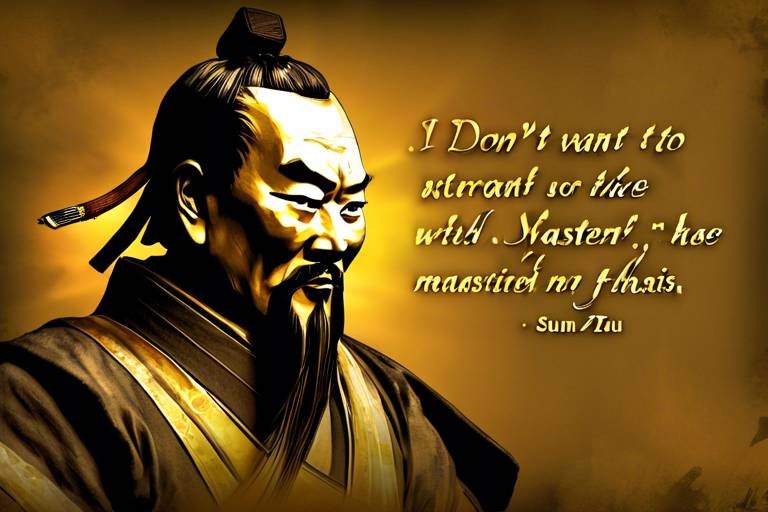Nicholas II: The Last Emperor of Russia
Exploring the life, reign, and downfall of Nicholas II, the final monarch of the Russian Empire, whose rule came to an end during the tumultuous events of the Russian Revolution.
Insights into Nicholas II's upbringing, education, and his unexpected rise to power following the death of his father, Tsar Alexander III.
An overview of the political, social, and economic conditions in Russia during Nicholas II's reign, including his policies, reforms, and challenges faced by the empire.
Examining the impact of World War I on Russia, Nicholas II's leadership during the conflict, and the events that led to the abdication of the Romanov family.
Detailing the revolutionary movements, protests, and uprisings that culminated in the overthrow of the monarchy and the establishment of a new government in Russia.
The circumstances surrounding Nicholas II and his family's confinement, their eventual fate under Bolshevik rule, and the tragic end of the Romanov dynasty.
Reflecting on the historical significance of Nicholas II's reign, his impact on Russian history, and the controversies and debates surrounding his legacy as the last emperor of Russia.
Exploring the process of Nicholas II's canonization as a saint by the Russian Orthodox Church, as well as the various memorials and tributes dedicated to his memory in modern-day Russia.
Analyzing the portrayal of Nicholas II in historical accounts, literature, films, and popular culture, and how his story continues to captivate audiences worldwide.
Stay tuned for the FAQ section!

Early Life and Ascension to the Throne
Nicholas II, the last Emperor of Russia, was born on May 18, 1868, in Saint Petersburg, Russia, as the eldest son of Tsar Alexander III and Empress Maria Feodorovna. His early life was marked by a strict upbringing and rigorous education, preparing him for the responsibilities that awaited him as the future ruler of the vast Russian Empire. Despite not initially being groomed for the throne, Nicholas II's life took a sudden turn following the unexpected death of his father in 1894, thrusting him into the position of Tsar at the young age of 26.
Ascending to the throne amidst a period of political and social unrest, Nicholas II faced the daunting task of leading a country grappling with widespread discontent and calls for reform. His coronation in 1896 was meant to symbolize a new era of hope and progress for Russia, but it soon became apparent that challenges lay ahead for the young monarch. Despite his genuine intentions to modernize and improve the lives of his people, Nicholas II's reign would be marred by turmoil and upheaval.
As Tsar, Nicholas II inherited a vast empire stretching from Eastern Europe to Siberia, encompassing a diverse population with varying cultural and religious backgrounds. His efforts to maintain the autocratic system of government established by his predecessors while also addressing the demands for political change proved to be a delicate balancing act, one that would ultimately test the limits of his authority and leadership.
Throughout his early years on the throne, Nicholas II grappled with the complexities of ruling a vast and complex empire, navigating the intricate web of court politics and bureaucratic challenges that came with his position. Despite his best efforts to enact reforms and improve the living conditions of his subjects, the Tsar's decisions often fell short of addressing the underlying issues fueling discontent among the Russian populace.

Russian Empire Under Nicholas II
During Nicholas II's reign, the Russian Empire experienced a period of significant political, social, and economic upheaval. Nicholas II ascended to the throne in 1894, following the death of his father, Tsar Alexander III. His reign was characterized by a strong autocratic rule, maintaining the traditional values of the Russian monarchy.
Politically, Nicholas II faced numerous challenges, including growing discontent among the Russian population, particularly the working class and peasants. The empire's vast size and diverse population made governance complex, leading to tensions and unrest in various regions.
Economically, Russia was undergoing rapid industrialization and urbanization during Nicholas II's rule. The industrial sector was expanding, but social inequalities were also on the rise, leading to widespread poverty and discontent among the lower classes.
Nicholas II implemented some reforms during his reign, such as the creation of the State Duma, Russia's first parliament. However, his commitment to maintaining autocratic rule limited the effectiveness of these reforms, as he often resisted sharing power with elected representatives.
The Russian Empire also faced external challenges, including military conflicts such as the Russo-Japanese War in 1904-1905. These conflicts strained the empire's resources and highlighted the weaknesses in its military and administrative systems.
Overall, the Russian Empire under Nicholas II was a complex and tumultuous period in Russian history, marked by political unrest, social inequality, and economic challenges. The legacy of Nicholas II's rule continues to be debated and analyzed by historians and scholars, shaping our understanding of this pivotal era in Russian history.

World War I and the Fall of the Romanov Dynasty
Exploring the life, reign, and downfall of Nicholas II, the final monarch of the Russian Empire, whose rule came to an end during the tumultuous events of the Russian Revolution.
During World War I, Russia faced significant challenges that ultimately led to the downfall of the Romanov Dynasty. Nicholas II's decision to enter the war on the side of the Allies strained the resources of the empire and exacerbated existing social and economic issues. The military failures and high casualty rates further weakened the Tsar's position and eroded public support for the monarchy.
As the war dragged on, discontent among the Russian population grew, fueling revolutionary sentiments. Strikes, protests, and food shortages added to the unrest, creating a volatile environment that would ultimately contribute to the fall of the Romanov Dynasty. Nicholas II's leadership during the war was criticized for its ineffectiveness and detachment from the suffering of his people.
The February Revolution of 1917 marked a turning point, with widespread demonstrations leading to the abdication of Nicholas II in favor of a provisional government. The Tsar's inability to address the grievances of the Russian people and implement meaningful reforms played a significant role in his downfall. The events of World War I exposed the weaknesses of the Russian Empire and paved the way for the revolutionary changes that followed.
Q: Was Nicholas II directly responsible for the fall of the Romanov Dynasty?
A: While Nicholas II's leadership during World War I and his handling of internal unrest certainly contributed to the downfall of the Romanov Dynasty, the underlying social, economic, and political factors were also significant in shaping the events of the Russian Revolution.
Q: What was the impact of World War I on Russia?
A: World War I strained the resources of the Russian Empire, leading to economic hardship, food shortages, and widespread discontent among the population. The military failures and casualties further weakened the Tsar's authority and paved the way for revolutionary movements.
Q: How did the February Revolution of 1917 contribute to the fall of the Romanov Dynasty?
A: The February Revolution of 1917 resulted in the abdication of Nicholas II and the establishment of a provisional government. The events of the revolution highlighted the deep-seated dissatisfaction with the Tsarist regime and set the stage for the further dismantling of monarchical power in Russia.

Russian Revolution of 1917
The Russian Revolution of 1917 was a watershed moment in Russian history, marking the end of centuries of imperial rule and the beginning of a new era of revolutionary change. The revolution was a culmination of years of discontent, sparked by the social, political, and economic turmoil that had been simmering in the Russian Empire. It was a time of great upheaval, as the people rose up against the autocratic rule of Tsar Nicholas II and demanded change.
One of the key events that precipitated the revolution was the February Revolution, which saw widespread protests and strikes in Petrograd (now St. Petersburg) leading to the abdication of Nicholas II. The Provisional Government, composed of various political factions, took power, but its authority was challenged by the rise of the Bolsheviks, led by Vladimir Lenin.
Lenin's Bolshevik Party, advocating for a socialist revolution, gained popular support among the working class and soldiers disillusioned by the ongoing World War I. The October Revolution, also known as the Bolshevik Revolution, culminated in the storming of the Winter Palace and the establishment of a new government based on Soviet councils (soviets).
The Russian Revolution of 1917 had far-reaching consequences, not only for Russia but for the world as a whole. It led to the creation of the Soviet Union, the first socialist state, and sparked a wave of revolutionary movements across Europe and beyond. The events of 1917 fundamentally altered the course of history, shaping the geopolitical landscape of the 20th century.

House Arrest and Execution
During the turbulent aftermath of the Russian Revolution, Nicholas II and his family were placed under house arrest by the Bolsheviks. Cut off from the outside world, their once opulent lifestyle gave way to a life of seclusion and uncertainty. The former emperor, along with his wife, Empress Alexandra, and their five children, faced a stark reality as the new Soviet government consolidated its power.
Despite their captivity, rumors of rescue attempts and potential asylum abroad swirled around the Romanov family. However, these hopes were dashed when, in a shocking turn of events, Nicholas II and his family were executed by Bolshevik forces in July 1918. The brutal act sent shockwaves throughout the world, marking the definitive end of the Romanov dynasty.
Their bodies were disposed of in a clandestine manner, buried in unmarked graves to conceal the grim fate that had befallen the last imperial family of Russia. The execution of Nicholas II and his family symbolized the brutal and merciless nature of the revolution, cementing their places in history as tragic victims of political upheaval.

Legacy of Nicholas II
When delving into the legacy of Nicholas II, one cannot ignore the profound impact he had on Russian history and the lasting controversies that continue to surround his reign. As the final emperor of Russia, Nicholas II's rule marked the end of centuries of imperial tradition and ushered in a new era of political upheaval and transformation.
Despite facing numerous challenges during his reign, including widespread discontent among the Russian people and the pressures of modernization, Nicholas II left a complex legacy that is still debated by historians and scholars to this day. His policies and decisions, ranging from the implementation of limited reforms to his handling of social unrest, have been scrutinized for their role in shaping the events that ultimately led to the downfall of the Romanov dynasty.
One aspect of Nicholas II's legacy that continues to spark debate is his personal character and leadership style. Often portrayed as a well-meaning but indecisive ruler, Nicholas II's actions during critical moments in Russian history, such as the handling of the 1905 Revolution and his response to the challenges of World War I, have been the subject of intense scrutiny and criticism.
Furthermore, the tragic fate that befell Nicholas II and his family following the Russian Revolution of 1917 has added a layer of poignancy to his legacy. The execution of the Romanovs in 1918 not only marked the end of an era but also solidified Nicholas II's status as a martyr in the eyes of many supporters and sympathizers.
Despite the controversies and criticisms surrounding his reign, Nicholas II's legacy endures in modern Russia through various memorials, tributes, and cultural representations. His image as the last emperor of Russia, a symbol of a bygone era of grandeur and tragedy, continues to captivate the imagination of artists, writers, and filmmakers seeking to capture the essence of his tumultuous reign.

Canonization and Commemoration
After the tragic end of Nicholas II and his family, a significant shift occurred in how he was perceived by the Russian Orthodox Church. The process of his canonization as a saint marked a remarkable turn of events for the last emperor of Russia. Despite the controversies and debates surrounding his reign, Nicholas II was eventually recognized for his faith and martyrdom.
The Russian Orthodox Church played a pivotal role in the canonization of Nicholas II, honoring his memory and sacrifice. This act of sanctification elevated Nicholas II to a revered status, with many believers commemorating his life and legacy through religious ceremonies and tributes.
Various memorials and tributes dedicated to Nicholas II can be found across modern-day Russia, serving as reminders of his reign and the turbulent times in which he lived. These monuments stand as testaments to his enduring presence in Russian history and the impact he had on the country.
Through the process of canonization and the ongoing commemoration of his life, Nicholas II's legacy continues to be celebrated and remembered. His story serves as a symbol of faith, resilience, and the complexities of leadership, resonating with individuals who seek to understand the historical significance of his reign.

Historiography and Popular Culture
When delving into the historiography and popular culture surrounding Nicholas II, it becomes evident that his legacy has been subject to various interpretations and representations over the years. Historians have offered diverse perspectives on his reign, ranging from portraying him as a weak and ineffective ruler to highlighting his efforts to modernize Russia. These differing accounts contribute to a complex understanding of Nicholas II's character and leadership.
In literature and films, Nicholas II often emerges as a tragic figure, caught in the midst of political turmoil and personal struggles. Works such as "Doctor Zhivago" by Boris Pasternak and "Anastasia" by Don Bluth have immortalized the Romanov family in popular culture, captivating audiences with tales of romance, intrigue, and tragedy.
Moreover, Nicholas II's story continues to inspire artistic endeavors, with numerous paintings, sculptures, and musical compositions dedicated to commemorating his life and reign. Artists and musicians draw upon the mystique surrounding the last emperor of Russia, infusing their creations with themes of nostalgia, loss, and the passage of time.
Furthermore, the enduring fascination with Nicholas II extends to modern media, where documentaries, television series, and online platforms explore his legacy in-depth. Audiences worldwide are drawn to the enigmatic persona of the last tsar, seeking to unravel the mysteries of his rule and the ultimate downfall of the Romanov dynasty.
Frequently Asked Questions
- What were the major events that shaped Nicholas II's reign?
Nicholas II's reign was marked by significant events such as World War I, the Russian Revolution of 1917, and the fall of the Romanov dynasty. These events had a profound impact on the course of Russian history and ultimately led to the end of the monarchy.
- How did Nicholas II's policies contribute to the downfall of the Russian Empire?
Nicholas II's autocratic rule, resistance to political reforms, and mishandling of crises such as Bloody Sunday and World War I contributed to growing discontent among the Russian people. His inability to address the country's social and economic challenges ultimately led to the collapse of the empire.
- What was the fate of Nicholas II and his family after the Russian Revolution?
Following the Russian Revolution, Nicholas II, his wife Alexandra, and their children were placed under house arrest. In 1918, they were executed by the Bolsheviks in Yekaterinburg, marking the tragic end of the Romanov dynasty.
- Why is Nicholas II a controversial figure in Russian history?
Nicholas II is a controversial figure due to his autocratic rule, the events of Bloody Sunday, his handling of World War I, and the ultimate downfall of the Russian Empire under his leadership. His legacy continues to spark debates among historians and the public.
- How is Nicholas II remembered in modern-day Russia?
In modern-day Russia, Nicholas II is remembered through various memorials, tributes, and the Russian Orthodox Church's canonization of him as a saint. His reign and tragic fate remain a significant part of Russian historical memory and cultural heritage.



















